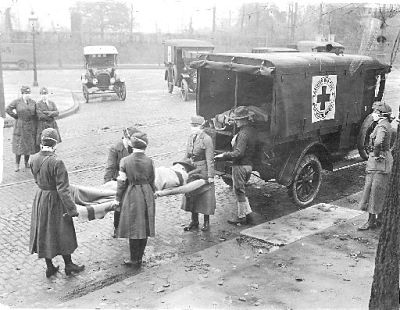Not long after I had managed to hurl myself down the Canada Line stairs (thankfully, not headlong) last week; even as I nursed giant multicolour bruises and a lump below my knee I found myself reflecting on the extraordinary, combined, resilience and fragility of the human body.
On the one hand, practically before my eyes, the immune system response was set in motion by the trauma: a lump the size of a goose egg beneath the knee that felt rock hard but was clearly filled with fluid; puffiness, tenderness, redness … Well, you get the picture. We’ve all been there at some point or another.
That basic inflammatory reaction was described nearly 2000 years by a Roman observer, Celsus, who – in the best empiric tradition circa 30 AD – listed the characteristics tubor (swelling), rubor (redness), calor (heat) and dolor (pain). In response to the cellular debris that the blow had dislodged the immune system dispatches macrophages, neutrophils and various and sundry immune compounds to begin “eating” them. (The term phage was coined by a late 19th century Ukrainian immunologist, Metchnikoff, whose real expertise was food and digestion; when he observed that even a starfish ‘defended’ itself from a thorn by sending along these tiny immune substances what he saw looked like eating so he called them big eaters, macro-phages.)
The heat is generated by increased blood flow to the affected region and the redness is due to dilated blood vessels. Meanwhile, the pain serves a very useful purpose: it keeps you off the leg (or arm or what-have-you). Of course the inflammation itself is a source of pain as it acts on the nerve endings – and tugs at the skin which becomes tender as a result.
All this many years later we’ve only managed to add one more characteristic to Celsus’s, namely loss of function which is pretty damn obvious. When something’s swollen and red and painful, you tend not to favour it, and, as I found out with the leg I came down fairly hard on, it keeps you from overusing it which allows the immune system to do its thing. Bloody clever of physiology, don’t you think, creating its own splint?
The body’s resilience, adaptability and sheer cleverness never cease to amaze me. The immediate gastric response to something bad we’ve eaten, often accompanied by nausea, vomiting and diarrhea that in essence expels whatever is overtly causing the problem. The sneezing and sore throat that’s a response to a viral infection. The immediate skin response when it’s been broken and bacteria have become lodged within. Of course the immune response can also go haywire and maladaptive, as in rheumatoid arthritis which is inflammation in response to nothing. But that’s the price we pay for having this self-adjusting system inside that keeps us ‘safe’; anything that’s designed to kill can also turn on the host. As in friendly fire.
I have tried, incidentally, to put many of my military metaphors in quotes because I’m only too well aware that the immune system’s real response is not conflictive or militaristic but an attempt to achieve balance within the body. We are all a giant morass of bacteria and viruses and parasites and microbes; it is only at those times when something overwhelms that the reaction spirals out of control. In my recent case, that fall down the stairs. But that’s also why we succumb to a cold when we’re stressed or not sleeping or grieving or generally below par. It is not the virus “attacking” but our immune system not able to stay within its normal homeostatis.
(A brilliant, fairly old, book for anyone who’s interested in this idea is The Tao of Immunology by Mark Lappe, which I recommend highly.)
On the flip side of that resilience is also immense fragility. It would have been simplicity itself, had my fall taken a different turn, to imagine a broken bone or worse – brain damage, cognitive impairment, seizures, even death. I can list off without too much thought several people I’ve known to whom this has happened.
Years ago there was an ad, a simple print one, that showed an empty wheelchair and had as a tag line something to the effect of “it only takes an instant to change a life”. Which of course is true. One split second of inattention at the wheel – or on a set of stairs at the train station – or a simple glance at a text message can irrevocably change one’s life. Forever. All those cool new prosthetics and potential advances in neuroscience and this and that notwithstanding.
This is why I simply do not understand why we are so ready, so willing, so damn trusting when it comes to subjecting ourselves to screenings, such as colonoscopies, that can go sideways, nick the bowel and have one in ICU. Or willingly line up to take our radiation with a CT scan (which, I would remind you, emits up to 400 times as much radiation as an x-ray depending on the vintage of the machine) only to hear that the knee will get better on its own and if it doesn’t we’ll eventually need surgery. Um, and you needed a picture to tell you that?
Bad things can happen and inattention – that multitasking of which we are so proud – occasionally means mishaps. But when people essentially feel perfectly fine; when a person has the means and wherewithal to eat reasonably well and exercise; when we have enough money to do some of the things we like to do not to mention procure the basics of life, why on earth must we be so hypochondriacal as to always worry about possible future ill health? Especially when all those dire (and erroneous) statistics like ‘one woman in four’ will end up with osteoporosis turned upside down means that three women in four will not?
How did we all become such neurotics anyway?





